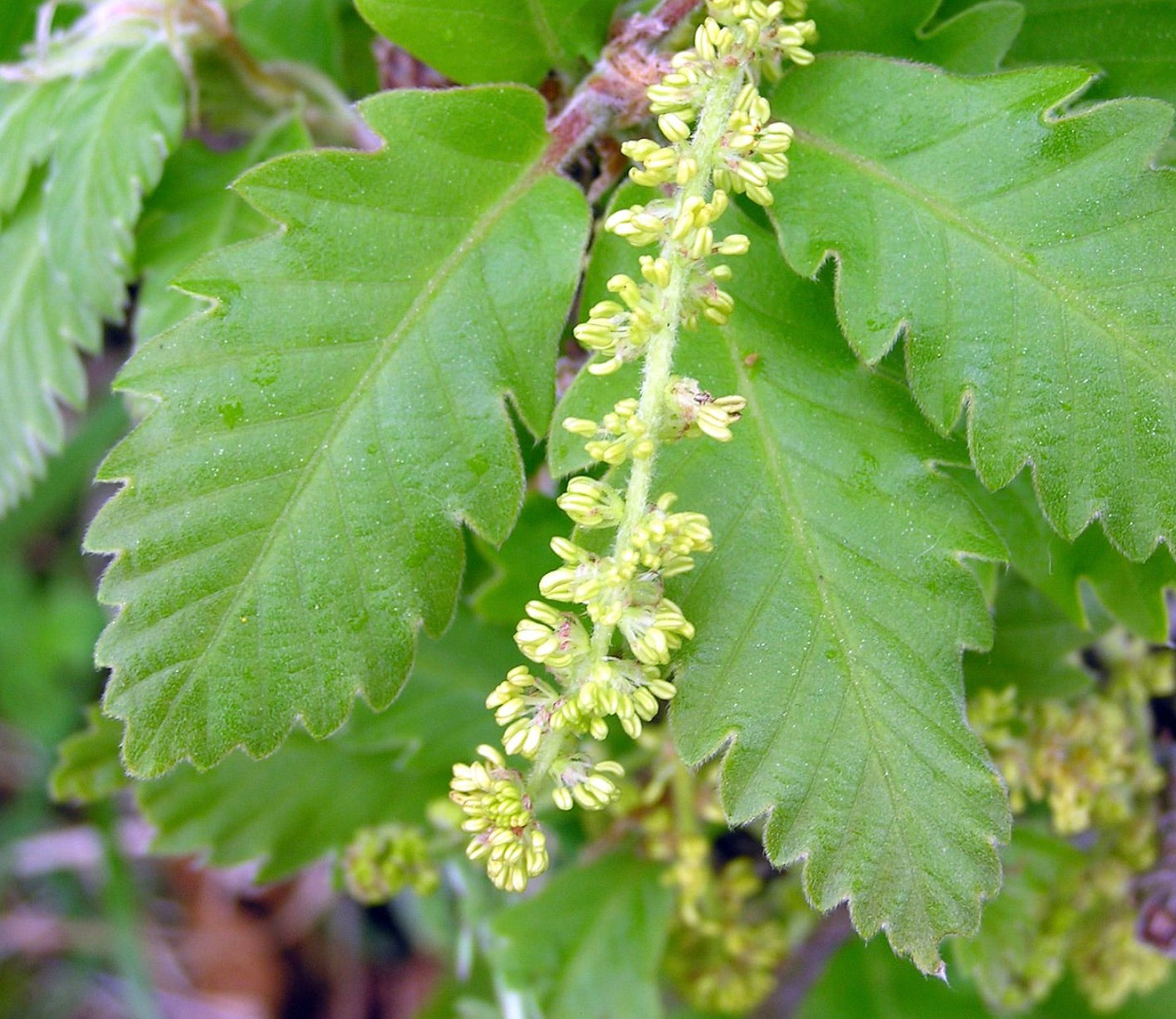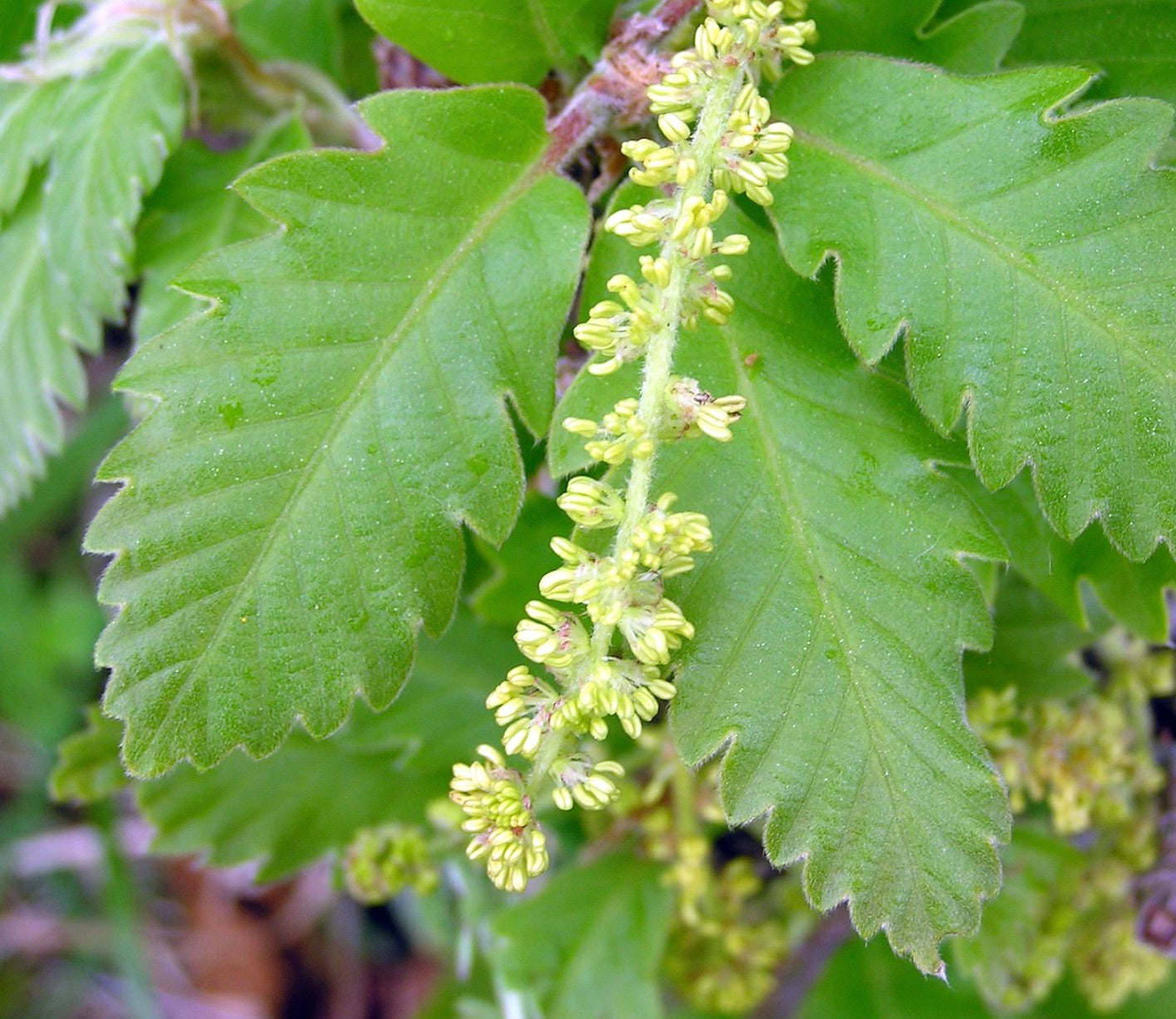Quercus macranthera 10-30cm
Quercus macranthera 10-30cm
Couldn't load pickup availability
Product Description
Quercus macranthera, commonly known as the Caucasian Oak, is a remarkable deciduous tree native to the Caucasus region, including parts of Russia, Georgia, Armenia, and Azerbaijan. This oak species is celebrated for its stately and imposing presence, featuring a wide and rounded canopy of deeply lobed, dark green leaves that transform into stunning shades of red, orange, or brown in the fall, creating a breathtaking display of autumn foliage. The Caucasian Oak is renowned for its adaptability to diverse environmental conditions and its ability to thrive in mountainous regions with challenging climates. It produces acorns that serve as a vital food source for wildlife, including birds and mammals. With its grandeur, attractive foliage, and ecological significance, Quercus macranthera is a sought-after choice for parks, arboretums, and landscapes in regions with similar climates.
Cultivation: Cultivating Quercus macranthera, or the Caucasian Oak, can be successful when you follow these essential cultivation tips:
-
Climate: The Caucasian Oak thrives in temperate to cold continental climates with distinct seasons. It is well-suited to regions with cold winters and warm summers.
-
Sunlight: Plant in a location that receives full sunlight to partial shade. While it can tolerate partial shade, full sun promotes the best growth and vibrant leaf color.
-
Soil: The Caucasian Oak is adaptable to various soil types, including loam, clay, and sandy soils. It prefers well-draining soil but can tolerate occasional waterlogging.
-
Watering: Young trees require regular watering to establish deep roots. Once mature, the Caucasian Oak is generally drought-tolerant and can withstand dry conditions.
-
Fertilization: Established trees typically do not require fertilization. However, you can apply organic mulch around the base to improve soil quality.
-
Pruning: Minimal pruning is necessary for the Caucasian Oak. Remove dead or damaged branches and shape the tree as needed to maintain its desired form.
-
Pests and Diseases: These oaks are generally hardy and less susceptible to pests and diseases compared to some other oak species. Monitor for issues and take appropriate action if necessary.
-
Acorns: Allow the Caucasian Oak to produce acorns, which are an essential food source for wildlife, including birds and mammals. This contributes to the ecological value of the tree.
-
Propagation: Propagate the Caucasian Oak from seeds, which should be planted in the fall or stratified before planting. Keep in mind that growing from seeds may take several years to establish.
-
Landscaping: Consider using the Caucasian Oak as a specimen tree in larger landscapes, parks, or as part of conservation efforts in regions with similar climates. Its majestic presence and vibrant fall foliage make it a desirable addition to gardens and natural settings.
By following these cultivation tips, you can successfully grow and appreciate the grandeur and ecological importance of Quercus macranthera, or the Caucasian Oak, in your garden or landscape while ensuring its health and vitality.
IMPORTANT: Please be aware that picture 1 show adult plant not for sale, the offer is for a plant in the dimension indicated in title description.
Please be aware that most plants change across seasons. For example, some of them will naturally lose leaves or change in colour during colder months. Do not hesitate to contact us for further informations about the plants of your interest.
Cultivation
Cultivation
Info and Disclaimers
Info and Disclaimers
Plant height: 15-30cm
Pot diameter:
Picture taken on:


